|
Animal Homosexuality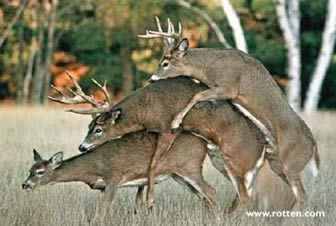 For centuries, perhaps millenia, homosexuals have been beaten up on, literally and physically, for engaging in sex that is "not natural". The arrogant assumptions underlying this abuse is that (a) even among the animals, the sole purpose of sex is reproduction, and that (b) all animals are heterosexuals—a few neurotic house pets aside. Therefore, homosexuality could not occur in nature and is an abomination.
For centuries, perhaps millenia, homosexuals have been beaten up on, literally and physically, for engaging in sex that is "not natural". The arrogant assumptions underlying this abuse is that (a) even among the animals, the sole purpose of sex is reproduction, and that (b) all animals are heterosexuals—a few neurotic house pets aside. Therefore, homosexuality could not occur in nature and is an abomination.
The problem is that these homophobic assumptions are blatantly incorrect. Biologists studying a broad range of species, from insect to avian to wildebeest to the king of beasts, report a startling degree of homosexual hanky-panky and other non-reproductive sexual goings-on. And while for decades they have tried to ignore the situation by dismissing animal homosexuality as something else or nothing at all—mistaken identity, dominance rituals, and so on—the sheer volume of data on the subject has at last made this impossible. In fact, as human beings have spent the last several decades perfecting technologies that could better allow them to spy on unsuspecting animals, both in the wild and in zoos, the uncensored truth has at last begun to get out: animals like getting their freak on as much as you or I, and in some cases more so. Oral sex, anal sex, masturbation, pulling out before ejaculation, sex with partners too old or young to reproduce—it seems they do it all, so much so that many naturalists are already admitting that while some species really are interested only when mating season comes around, others clearly just like making whoopee. Even for animals, having sex just feels good and is often done for its own pleasure, in ways that couldn't possibly lead to procreation, including with members of the same sex. What's more, as cross-species data have become more available through reporting and publication, researchers have begun sorting species onto a gay-straight continuum, noting whether their members
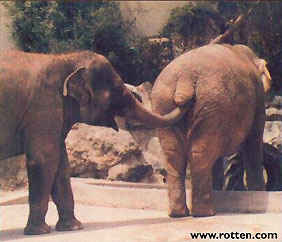 As the tally stands at present, some 450 different kinds of animals have been reported to exhibit some degree of homosexuality among their members (roughly 130 of them birds). This figure is especially significant given that only in the last 2-3 decades have biologists really been able to acquire sufficient evidence and observation to make drastic new conclusions about the vast and complex world of animal mating behaviors. As so much remains to be uncovered about animal sexuality, the actual number of species that exhibit "gay/lesbian" and other alternative behaviors may be far greater than 450. Not only do we not understand the full role and scope of "gay sex" in the animal kingdom, we are more ignorant than most people realize about heterosexual mating practices as well: there are many species whose heterosexual mating practices have yet to be observed!
As the tally stands at present, some 450 different kinds of animals have been reported to exhibit some degree of homosexuality among their members (roughly 130 of them birds). This figure is especially significant given that only in the last 2-3 decades have biologists really been able to acquire sufficient evidence and observation to make drastic new conclusions about the vast and complex world of animal mating behaviors. As so much remains to be uncovered about animal sexuality, the actual number of species that exhibit "gay/lesbian" and other alternative behaviors may be far greater than 450. Not only do we not understand the full role and scope of "gay sex" in the animal kingdom, we are more ignorant than most people realize about heterosexual mating practices as well: there are many species whose heterosexual mating practices have yet to be observed!
Surprising as this revelation may seem at first, it really makes sense when you consider that whenever humans come barging into their midst, most wild animals make their exit. And even among those who do not, the sound of approaching humans is enough to spoil the mood. After all, it's hard to observe potential enemies when you're humping away, and even harder to flee when your genitals are merged with someone else's genitals—or whatever. Of course, not all animal mating behavior consists of humping or merging. Rituals of courting and bonding comprise a significant portion of gay and straight mating behavior. But the principle remains the same—humans generate fear and uneasiness, neither of which is an aphrodisiac.
So it comes as quite a surprise to most people to learn just how much gaiety and sexual frivolity actually exist in the animal kingdom. Laying aside the issue of numbers of species observed in the behavior, we are stunned by the sheer depth and complexity of same-gender sex in the animal kingdom. It comes as quite a revelation to learn that some of the queerest creatures are those we thought we already knew so much about—those of us with Animal Planet anyway. A quick survey of the bisexual/queer as folk category in fact reveals some surprising names: american bison, bighorn sheep, giraffes, African buffalo, Thomson's gazelles, kob antelope, black swans, greylag geese, various gulls and sandpipers, lyre birds, cock-of-the-rock, assorted parrots, walruses, harbor seals, elephant seals, manatees, orca whales, gray whales, bottlenose and spinner dolphins, gorillas, various macaque apes and langur monkeys, and pygmy (or bonobo) chimpanzees. Bison, those large, rugged symbols of the American West, are among the species which not only engage in homosexual activities with great frequency (for example, among males roughly three years and younger at least 55% of mounting is male on male), but practice mounting that does not support the old-fashioned notion that the purpose of mounting is simply to carve out hierarchies of dominance. While the stereotyped image is of the biggest, toughest males merely rearing up on the flanks of wimpier males, just to show them who's boss, in reality there's a good deal of hot juicy sex going on.
And bison are certainly not unique. Male bighorn sheep, for example, also actively strive to accommodate their male lovers. The ram being mounted arches his back in a posture known as lordosis to aide the mounter in penetrating him. The mounting male meanwhile displays all the passion and apparent orgasmic finish associated with vaginal copulation. It is also worth noting here that Big Horn males engage in various other sexual behaviors, including group sex interactions in which three to ten individuals "cluster together in a circle, rubbing, nuzzling, licking, horning, and mounting each other" (Bagemihl, Biological Diversity, 1999). In a parody of every homophobe's Deliverance nightmare, such a group will even sometimes focus on a single male and take turns mounting him, sometimes working together to keep him from running away. Naturally all this male-on-male action makes one wonder: what are all the female bighorn and bison doing while this is going on? Since neither species has gone extinct yet, despite human predation, we can conclude that successful heterosexual breeding is taking place. Beyond that, while biologists have been lax to study and record the sexuality of many other species' females, researchers studying the bighorn assure us that female bighorns do not share the male's rampant libido, same-sex or otherwise. While rams show sexual interest all through the year, ewes only appear sexually active during the brief annual rut (i.e. while in heat), and even then only minimally.
Additionally, after dismounting her lover, the female kob is likely to lick her partner's vulva and udder while the recipient spreads her back legs and arches her back and neck, signaling the throes of intense sensation and probably pleasure. As if such displays were not enough to distinguish the kob from the more repressed female bighorn, there is the phenomenon of her extreme sexual frequency. Researchers estimate that kob females engage in these lesbian mounting sessions an average of twice per hour. Not all gay animal sex parodies hetero sex, however. While the mounting behaviors described above are significant, homosexual interactions among animals take on a variety of forms, some imitating or shared by reproductive sex and some not. Dolphins have been observed stimulating their partner's genital slit with their noses ("beaking"). Male apes hang from branches and rub their penises together ("fencing"). Manatees use their armpits, mouths, and flippers to pleasure their sexual partner. Whales and dolphins have been observed engaging in an orgy of rubbing bellies, stroking flippers, and engorged genitals—as many as six at a time among bow heads. Female apes finger-fuck each other, rub their clits together, and lick each other's labia. Deep kisses have been observed among different apes and monkeys, and many species incorporate grooming, cuddling, and carressing into their courtship. Most importantly, many species exhibit "mutuality": shifting roles between penetrated and penetrator, stimulator and stimulated—sometimes even carrying both out simultaneously. Because courting rituals are also an important part of animal sexuality it's worth adding here that homosexual courtship also varies from the standard hetero script. Just as sexual stimulation does not always parody the boy on girl pattern of heterosexuality, so too does courting sometimes diverge into alternative patterns—although perhaps less so than does sex itself. Birds are probably the best examples of the principle, with male birds sometimes acting the boy/girl roles and sometimes both acting the boy role side by side. For instance, two male greylag geese may stand side by side engaging in identical courtship displays. In another variation, some animals act out all the rituals of mating without ever getting around to the mounting. They just settle down to live companionable lives together—hunting together or laying on the same nest together or otherwise acting out the role of an old married couple (who just happen to be celibate). Probably one of the most significant things that we can observe from animal homosexuality is not its diversity or the mere fact that it occurs, but rather the survival-enhancing role that it plays within the social group of the animals themselves. That is, while we have long assumed that homosexuality was an evolutionary dead end, something that only interferes with the species' ability to reproduce itself, it may be that homosexual behavior strongly contributes to the survival of some if not all species which exhibit it.
At puberty, the female bonobo leaves her birth family to find a new group of females in another area—fortunate since mating with unrelated males in a new area will ensure that her young have a healthy mix of genes, usually good for the evolution and survival of the species. When she finds a new female family group, she enters into a lesbian relationship with an older female within the group, becoming her close companion in all things. Meanwhile she builds bonds with the other females in the group as well as with individuals in close neighboring groups. After a year or so she has an entire network of friends and lovers, male and female, within the group. Most significantly, even once she is actively mating with the males in the periphery of her new female home group, 64% of the young female's sexual interactions will continue to be with other females. The social benefits to the bonobo are clear. The young female forges bonds of affection, trust, and mutual support with the other females through cuddling, grooming, and mutually enjoyable sex. Just as Bonobo infants are bonded to their mothers and other family members by reassuring experiences of positive touch and the meeting of needs (cuddling, nursing, playing), so too do the females in the family group bond new members.
It is tantalizing to consider that such pro-social benefits may not be peculiar to bonobo chimpanzees and other primates. Perhaps even the bighorn sheep find social benefits from homosexual behavior. Specifically, it is possible that the pleasurable sexual interactions shared among males may help to offset the aggressive competition that erupts during the breeding season. Interestingly enough, homosexual activity is greatest when males have most access to females—during the "rut", the annual period when males are beating each others' brains in, horn to horn, to decide who will and will not breed with the females. One might be tempted to conclude that males are just hornier at this time of the year, spilling over into same-sex relations, but this really only seems to account for part of the behavior. With this theory we could explain away the male eagerness to "settle" for whatever is available and similar enough to a vagina (another male's rectum). But that would still leave us to explain all the mutual nuzzling and courting that goes on among males, as well as the willingness of males to themselves be anally penetrated.
Even after mating, some animal homosexual relationships persist. Naturalists studying various birds species have learned that, not only are there gay parents among the birds, but they actually prove themselves to be more successful than "straight" couples. Once the hurdle of becoming parents is over (which female pairs accomplish through a quick hetero fling and male pairs through adoption) homosexual bird couples do just fine. Lesbian pairs turned out to be much better at hatching their egg clutches than "straight" couples (more live chicks produced from the clutch) while gay male bird couples did the best of any group in successfully raising live, healthy offspring from egg to maturity. Male nest sitters could more successfully defend the nest against predators and other aggressors while the other male partner was off hunting food. Ultimately, our observation of animals shows us that homosexuality is only right and natural, and that contrary to our expectations, within nature homosexuality serves not to threaten and destroy heterosexual reproduction, but to augment it, by stabilizing individuals and communities with added bonds of affection and support, as well as giving a much needed outlet for sexual drives that would otherwise generate frustration and conflict. |
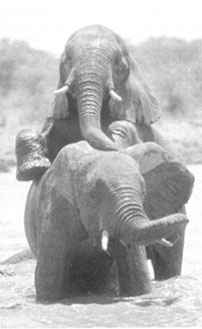 As a result, human knowledge of animal sex has previously relied heavily on our observations of domesticated animals, creatures whose sexual behavior has been grossly altered (by selective breeding, castration, and the culling of males) to accommodate the farmer's goal of carefully managed reproduction. And even when animal sexual behavior, wild or domestic, has deviated from the anticipated norm (again: sex is for reproduction and all animals are innately heterosexuals), human bias has simply filtered it out. That is, even if could be seen to exist, we simply didn't hear about it.
As a result, human knowledge of animal sex has previously relied heavily on our observations of domesticated animals, creatures whose sexual behavior has been grossly altered (by selective breeding, castration, and the culling of males) to accommodate the farmer's goal of carefully managed reproduction. And even when animal sexual behavior, wild or domestic, has deviated from the anticipated norm (again: sex is for reproduction and all animals are innately heterosexuals), human bias has simply filtered it out. That is, even if could be seen to exist, we simply didn't hear about it.
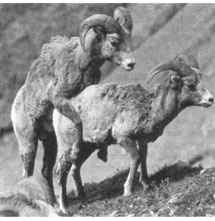 In fact, not only is anal intercourse a common outcome of such mounting, but the "mountee" often tries to help out with getting that big cock into his rectum, lifting his own tail out of the way and/or backing his rectum toward the erect penis of the mounting male, or otherwise positioning his hips to facilitate the penetration. What's more, when their little tryst is done (it usually lasts longer than vaginal/heterosexual copulation) the "mountee" may then allow himself to be mounted by several other bulls in succession.
In fact, not only is anal intercourse a common outcome of such mounting, but the "mountee" often tries to help out with getting that big cock into his rectum, lifting his own tail out of the way and/or backing his rectum toward the erect penis of the mounting male, or otherwise positioning his hips to facilitate the penetration. What's more, when their little tryst is done (it usually lasts longer than vaginal/heterosexual copulation) the "mountee" may then allow himself to be mounted by several other bulls in succession.
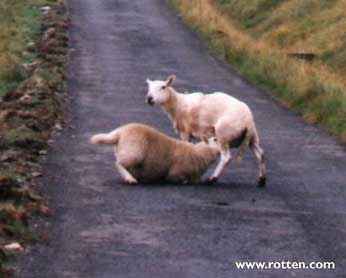 Not all female animals are quite so repressed, however. Among kob antelope we find an example of females who are not only highly sexed but strongly lesbian as well. Living in all-female herds, kob females interact only marginally with males for the purpose of insemination. Most of the time, the females busily engage in courtship displays and/or mounting with other females, with their lesbian mounting mimicking the heterosexual mounting done by males. Though there can be no actual penetration to show that "real" sex is taking place, it is interesting to note that at least part of the time the mounting female imitates the behavior that mounting males display at orgasm: that is, she gives a single, culminating deep thrust.
Not all female animals are quite so repressed, however. Among kob antelope we find an example of females who are not only highly sexed but strongly lesbian as well. Living in all-female herds, kob females interact only marginally with males for the purpose of insemination. Most of the time, the females busily engage in courtship displays and/or mounting with other females, with their lesbian mounting mimicking the heterosexual mounting done by males. Though there can be no actual penetration to show that "real" sex is taking place, it is interesting to note that at least part of the time the mounting female imitates the behavior that mounting males display at orgasm: that is, she gives a single, culminating deep thrust.
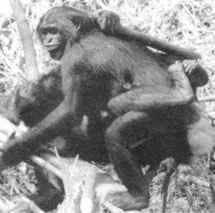 Perhaps the best illustration of this principle can be found among the bonobo chimpanzees. Bonobos (who just happen to be man's closest living relatives) organize their social life around small female-centered family groups. Males have their place in the larger social group, but it is essentially peripheral to the female groups. Meanwhile, the females within these core groups live together, sleeping, foraging for food, and raising their offspring together in a bonded, permanent family. What makes these groups truly special is that they are bound together not merely by food sharing and grooming but by their lesbian interactions.
Perhaps the best illustration of this principle can be found among the bonobo chimpanzees. Bonobos (who just happen to be man's closest living relatives) organize their social life around small female-centered family groups. Males have their place in the larger social group, but it is essentially peripheral to the female groups. Meanwhile, the females within these core groups live together, sleeping, foraging for food, and raising their offspring together in a bonded, permanent family. What makes these groups truly special is that they are bound together not merely by food sharing and grooming but by their lesbian interactions.
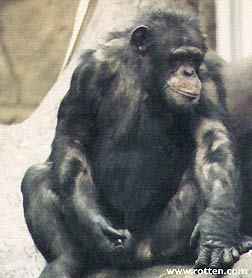 In turn, such tight bonds create a more peaceful, cooperative family group, one which provides a more safe, secure environment to successfully raise the next generation of offspring. If females in the group did not have a way to generate such bonds, then the constant influx of new females (and the departure of loved and accepted family members) would create stress and tension within the family groups and larger communities. As chimp researchers have well documented, stress and unease leads to conflict and even social chaos, with an increased risk of violence (especially risky around infants and small juveniles) and a reduced ability to work together to locate and share food and defend against predators or other outside aggressors.
In turn, such tight bonds create a more peaceful, cooperative family group, one which provides a more safe, secure environment to successfully raise the next generation of offspring. If females in the group did not have a way to generate such bonds, then the constant influx of new females (and the departure of loved and accepted family members) would create stress and tension within the family groups and larger communities. As chimp researchers have well documented, stress and unease leads to conflict and even social chaos, with an increased risk of violence (especially risky around infants and small juveniles) and a reduced ability to work together to locate and share food and defend against predators or other outside aggressors.
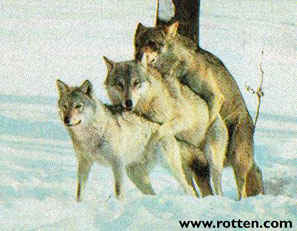 Though it can certainly be only speculation at this point, given what we have observed among the chimpanzees, one may be tempted to say that all this gay gadding-about simply soothes tempers, that rubbing, nuzzling, and sexual gratification serves to create a group of males who are calmer, less violent, and thus less likely to do serious harm to themselves or to the breeding females (and their resultant offspring).
Though it can certainly be only speculation at this point, given what we have observed among the chimpanzees, one may be tempted to say that all this gay gadding-about simply soothes tempers, that rubbing, nuzzling, and sexual gratification serves to create a group of males who are calmer, less violent, and thus less likely to do serious harm to themselves or to the breeding females (and their resultant offspring).